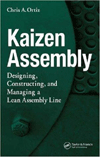Designing a motion control system is a process of calculations. Will the motor have enough horsepower to move the load? Can the structure handle rapid deceleration?
Ironically, engineers rarely apply the same effort to the cables that transmit power and control signals to the motors, sensors and actuators. Yet these cables often endure the same forces as the mechanical systems. Cables that are not up to this challenge can cause equipment downtime, electrical noise or worse, worker injury and fire.
"We run into the same issue over and over: Motors and controllers come with cables that aren't appropriate for continuous flexing," says Don Nester, product manager for the Chainflex line of cables made by Igus Inc. (East Providence, RI). "I spend all day cross-referencing their cables with cables that are designed to flex."
The specification process for cables begins with the basic requirements: voltage, current, length, the number and size of conductors. However, like actuators, cables should also be chosen to fit the motions they will experience. If the cable must flex, the design and layout of the conductors can make a difference in how long it lasts.
"If a cable has 25 conductors, there are two ways to make it," explains Dan Reese, vice president of Leoni Elocab Ltd. (Kitchener, ON, Canada). "One way is to arrange the conductors in concentric layers. The other is to bundle the wires in five groups of five, then twist those groups together. The grouped format gives you much better torsional stability than the layered design."
Fine- and medium-stranded conductors are more flexible than solid conductors. "Think of a rope vs. a coat hanger," says Nester. "If you bend the hanger, it holds its shape, but a rope is very flexible."
The binder, which holds the wires together in the cable, should be a slippery material, such as polyester or Teflon. "You want the components inside the cable to move freely," says Reese.
Another issue is the environment in which the cable will operate. Will the cable be exposed to solvents, lubricants, abrasion or weld spatter? Will the cable experience extreme heat or cold? Will the cable be used in a clean room? Insulation and jacket materials vary widely in cost and performance, and the choice often involves trade-offs. For example, polyurethane has excellent abrasion resistance, but poor resistance to aromatic hydrocarbons.
If electrical and magnetic interference is a concern, there are several options for shielding, including foil, braided wire, and single or double spiral-serve shielding. "Foils are not very flexible, but they do provide 100 percent coverage," says Reese. "Braided shielding is good, but not for torsional applications."
To further protect cables, especially in gantries and Cartesian robots, a flexible cable carrier is recommended. These devices consist of small hinged boxes or trays linked together in a chain. Cables rest inside these links, which can be open on one side or fully enclosed. The links can be made from steel or nylon, and many have shelves or dividers for extra containment.
"If the cable is moving, there will be points where the cable piles up and points where it's drawn out. A cable carrier holds the cable so it's not flopping around and getting caught on things," says Reese.
When specifying cable carriers, engineers should choose a link size that provides 10 percent clearance around the outer diameter of each cable. The minimum bend radius for a cable carrier is typically eight times the diameter of the largest cable.
Even when they're protected, cables do wear out and should be checked periodically. "How long a cable lasts depends on how well it was put together and how good the materials are," says Reese. "We've replaced cables that have lasted only a few thousand cycles. In contrast, we've made cable that can handle more than 60 million cycles."



